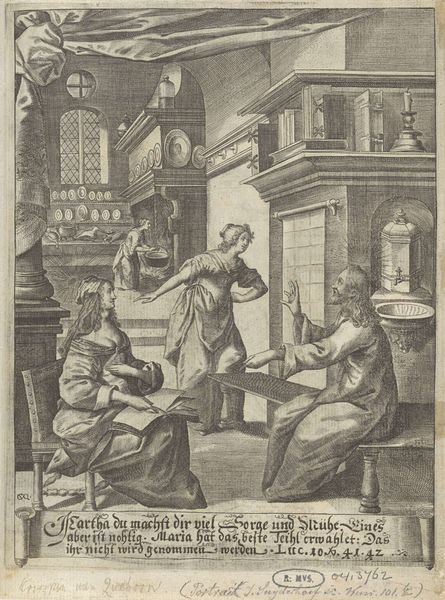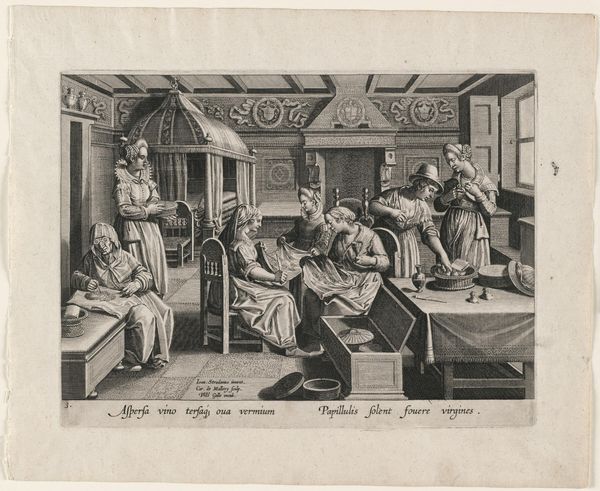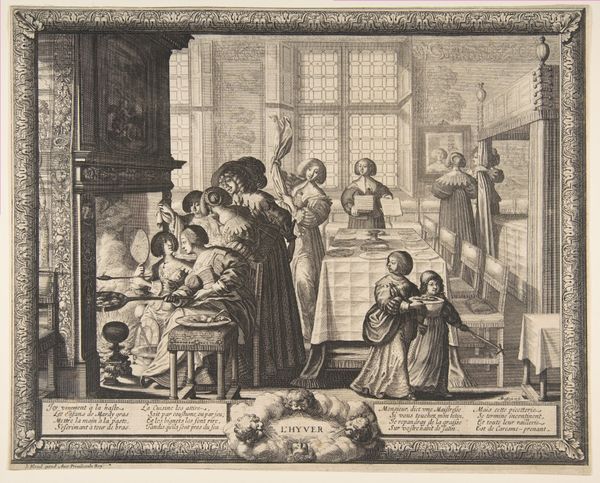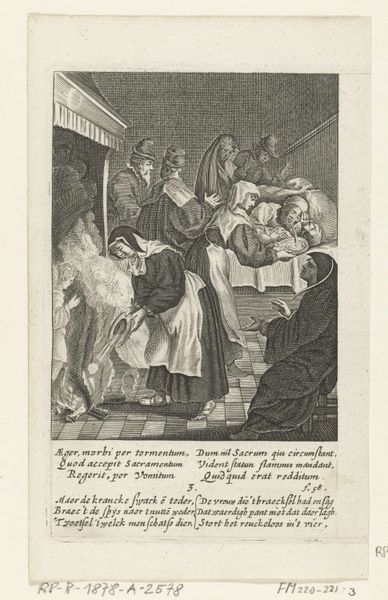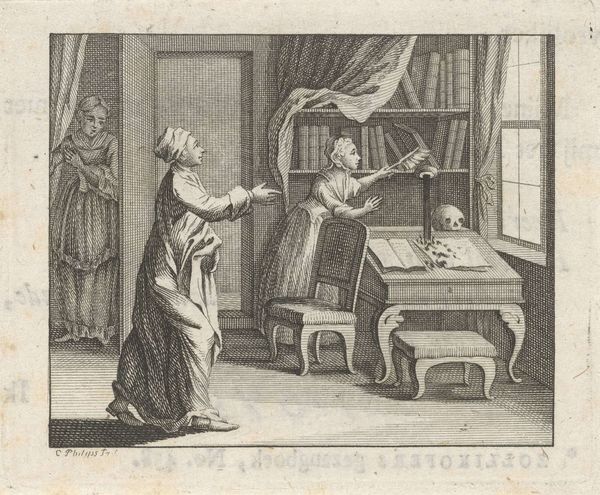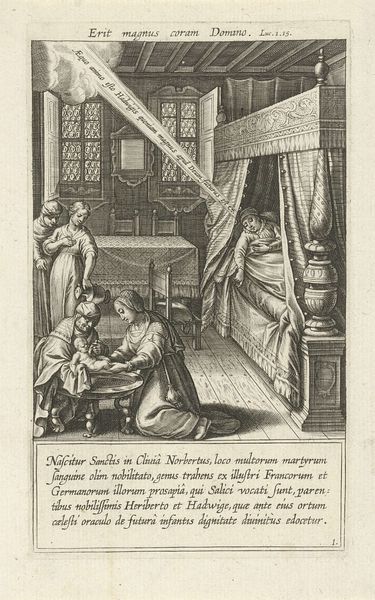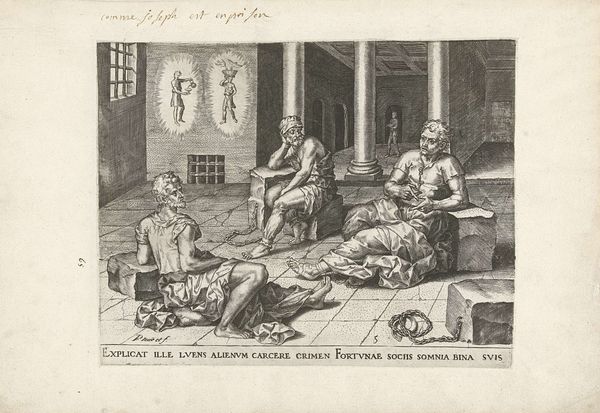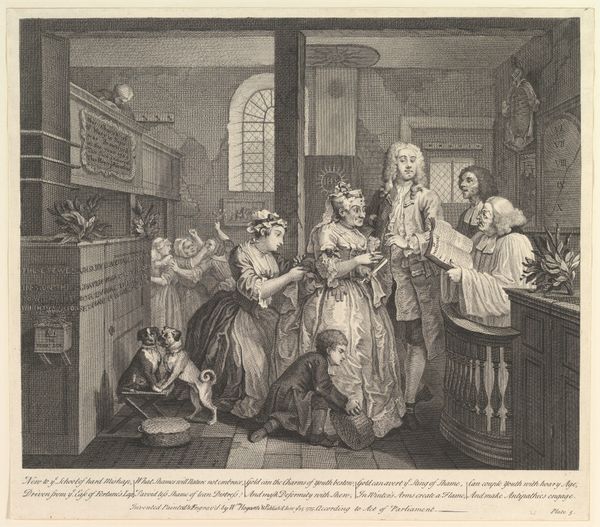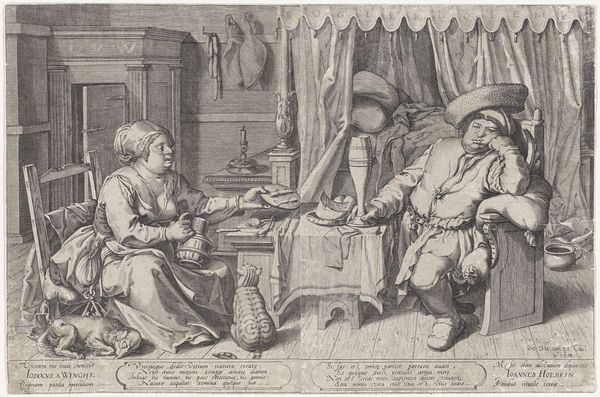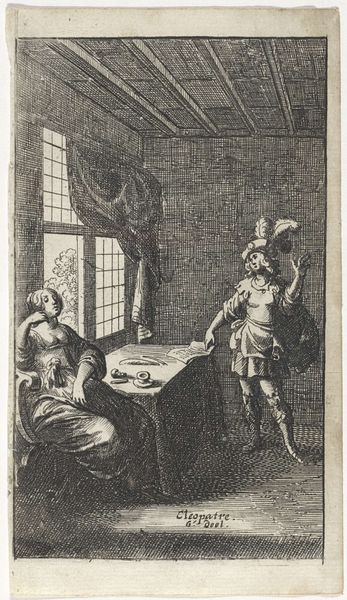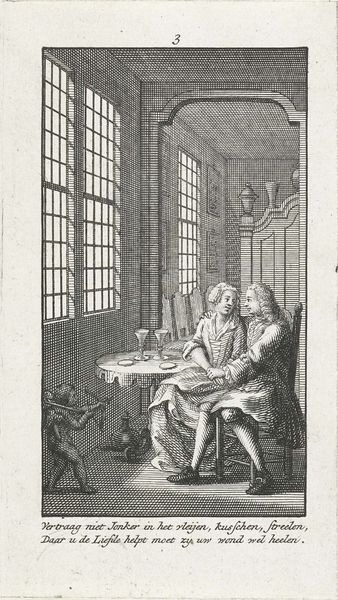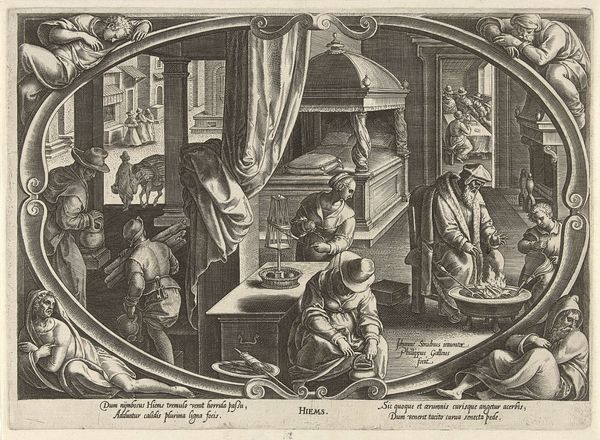
print, engraving
#
narrative-art
#
baroque
#
dutch-golden-age
# print
#
old engraving style
#
figuration
#
line
#
genre-painting
#
history-painting
#
engraving
#
realism
Dimensions: height 408 mm, width 518 mm
Copyright: Rijks Museum: Open Domain
Editor: This print, "Esau verkoopt zijn eerstgeboorterecht aan Jakob," possibly made between 1630 and 1702 by an anonymous artist, depicts a biblical scene using engraving. I find the composition quite intriguing, particularly how the light draws your eye to the figures. How do you interpret this work? Curator: This print gives us a fascinating window into 17th-century Dutch culture, engaging with themes of identity and power through this biblical story. The tale of Esau selling his birthright isn't simply a narrative; it speaks to social anxieties around inheritance, privilege, and perhaps most importantly, the construction of masculinity. Notice how Esau is positioned; does his body language suggest anything to you? Editor: I see him gesturing, perhaps negotiating... or maybe he is simply tired. Curator: Exactly. We could read this scene as highlighting a power imbalance masked as a transaction. Consider the symbolic weight of food in a time of scarcity and the vulnerability inherent in relying on another for sustenance. What does it mean for Esau to relinquish his birthright, his future, for a bowl of stew? Editor: I never thought about the role of food like that. It makes me consider how such seemingly simple acts are actually tied to larger social systems. Curator: Indeed. This image allows us to analyze how biblical narratives were used to reflect and reinforce specific societal values of that time. Editor: This has given me a much broader understanding of the work's complexity! I’ll definitely be thinking about the historical context of art more deeply moving forward. Curator: And I appreciate your insights into its contemporary resonance! It’s amazing how these dialogues across time can enrich our interpretations.
Comments
No comments
Be the first to comment and join the conversation on the ultimate creative platform.
